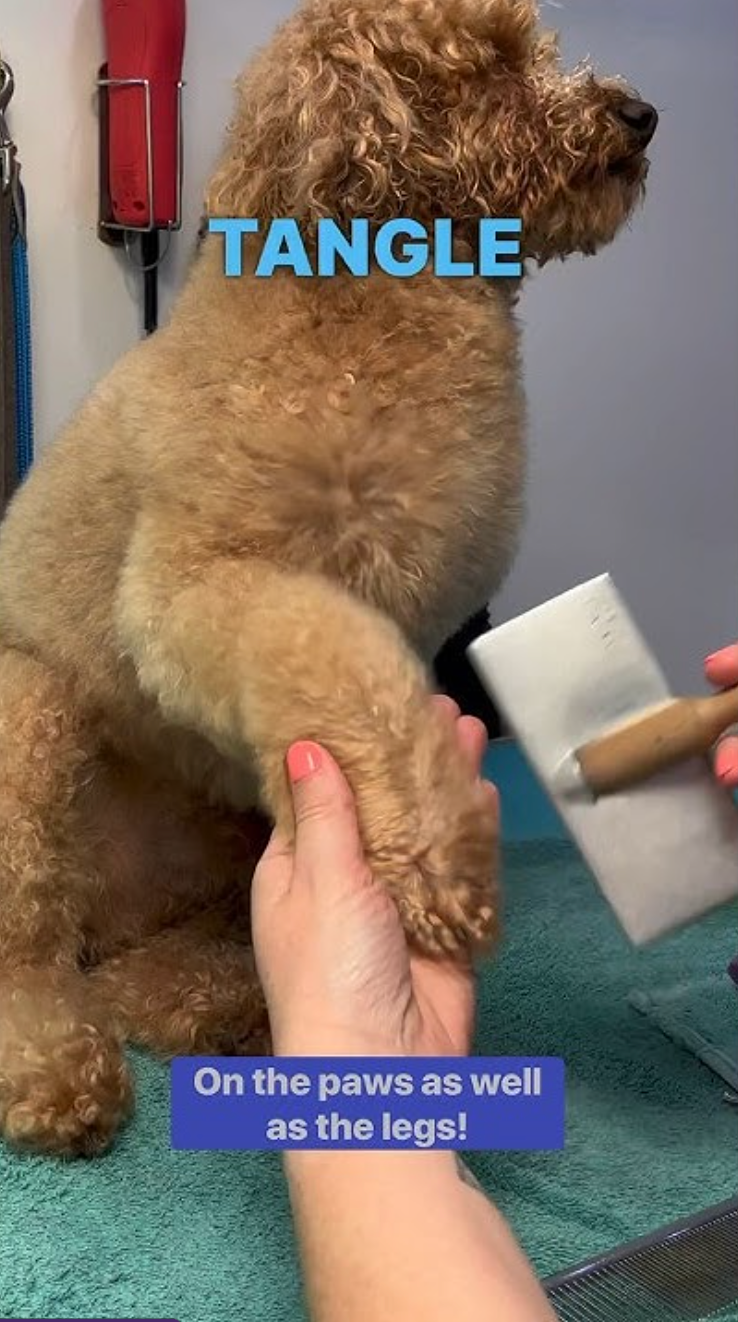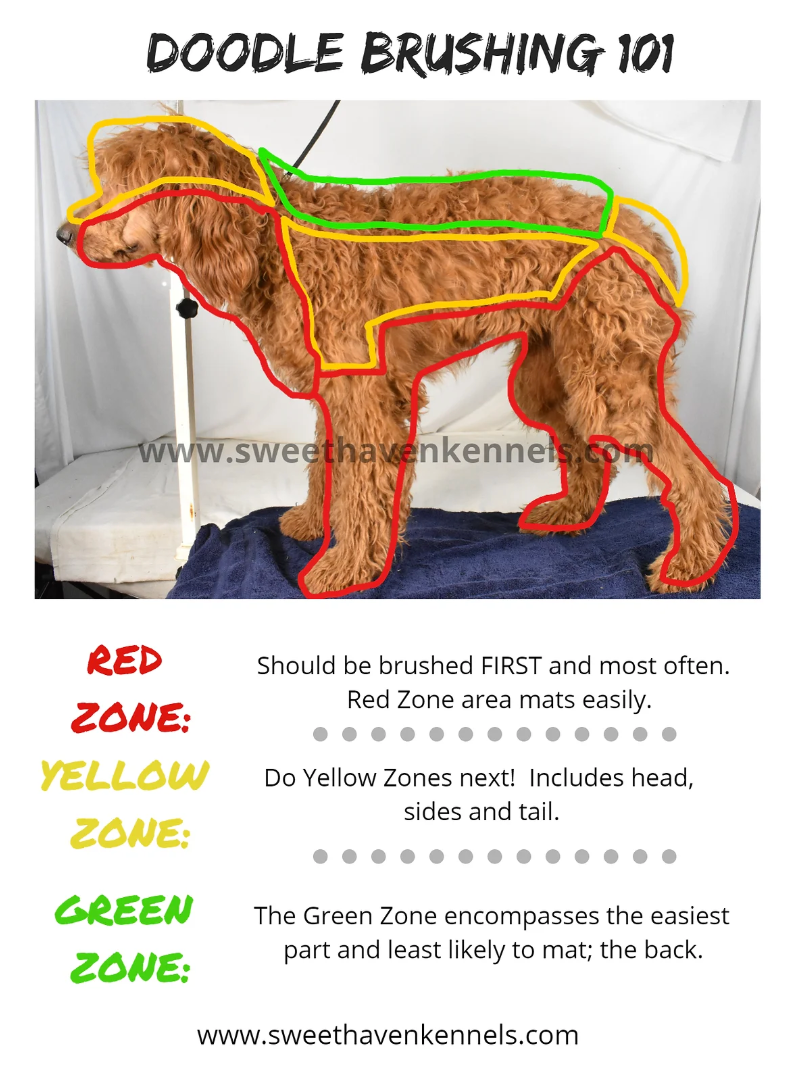What is Matting?
Matting is a condition in your dog's fur that is caused by dense tangles and knots. It's a painful condition that can lead to other health concerns such as infections or skin irritations and can also mask other health issues or parasites. Mats cut off the air flow in your dog's hair and can trap moisture, which can cause irritation and sores on your dog. Even mild matting can be painful, but in severe cases, matting can cut off circulation to your dog's skin and cause hematomas. In some circumstances, matting may be so severe that you would need to take your dog to a veterinarian for treatment.
Some dogs have coats that are higher maintenance and more vulnerable to matting. Any long hair dog can get matting, but certain breeds and coat types are more prone to matting, such as Poodles, Doodles, Curly coats, Cocker Spaniels, Bishon, ShihTzu and any variation of these breeds. Dogs with long silky coats such as Yorkies can also get matted as well as double coated dog. We provide services in South Portland and proudly serve clients from nearby Cape Elizabeth and Portland, ME.
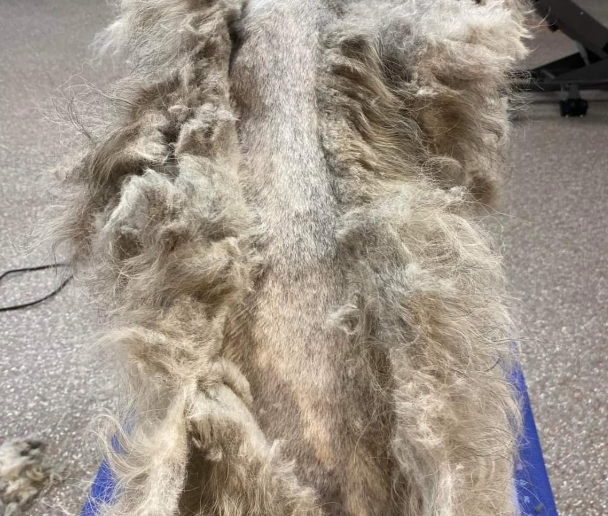
Matting fees will be additional to the grooming prices
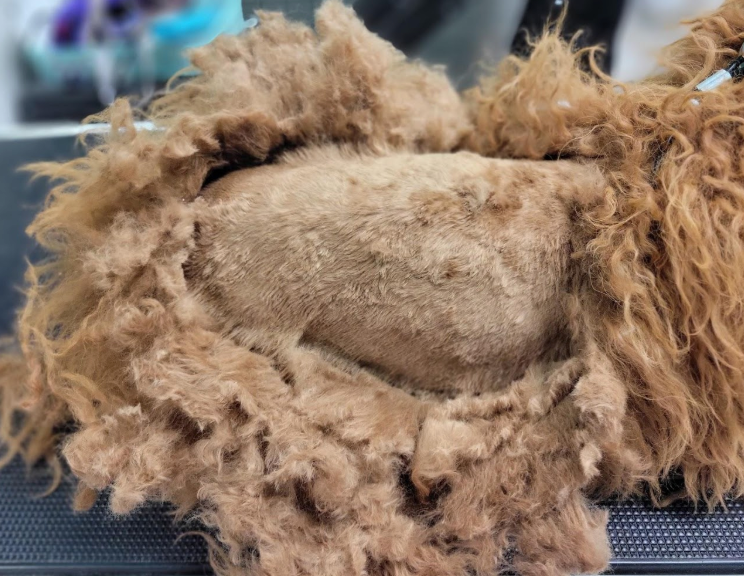
Causes
Friction - Matting is typically found in areas of your dog with the most friction. This includes armpits, where the collar or harness sits, legs where they lay down or come in contact with wet grass, behind the ears or areas of the body where they might be scratching.
Seasonal – Matting can develop during the time of year where they are "blowing their coat" and getting their summer coat. If the loose fur isn't brushed and removed, dead skin mixes with fur and it becomes a breeding ground for mats.
Allergies – Long hair dogs who have allergies that cause them to lick and itch will almost always develop some matting.
Fleas – If your dog has fleas and itches, the scratching will result in matted fur.
Water - Water can also contribute to matting. If your long hair dog goes outside after rain and his belly rubs the wet grass, he's likely to get matted between his legs or belly. If he enjoys swimming, chances are, he has experienced some matting as well. This is why we can not bathe a dog if there is matting. This will only cause the mats to get tighter. If you wash your dog at home, be sure to thoroughly dry and brush out to prevent matting.
Our philosophy
We always believe in comfort over vanity. There are times where dematting isn’t the best option for the safety and comfort of your dog. Dematting of severely matted dogs is inhumane and not a service that we will offer. If it can't be humanely saved, it should be removed.
The good news is that hair grows back! In the meantime, your dog will be much more comfortable with mats removed, and his skin will have proper airflow to begin healing.
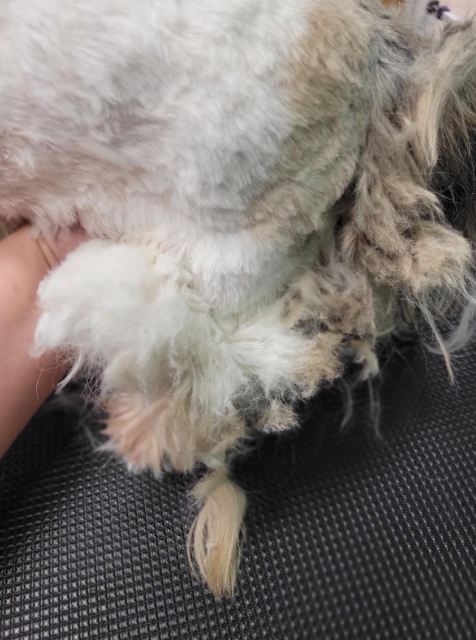
Matting fees will be additional to the grooming prices
What your groomer wants you to know
We love your dogs just as much as you do and this is why we do what we do. We are passionate dog lovers who have made a career choice of spending time with dogs and doing what we love. We only want the best for your dogs.
When your dog is matted, we believe in doing what is best for your dog. In many cases, this means shaving the mats out of your dog. Shaving is not a “short cut” to get the job done quickly, this can be a very slow, tedious and dangerous process. We are working on areas of your dog where skin is thin, likely already irritated and sometimes their hair is being pulled because of tight mats. Removing a heavily matted coat includes risks of nicks, cuts or abrasions due to warts, moles and skin folds trapped and hidden within the matted hair. Therefore, shaving a matted dog must be done slowly with utmost care.
Cutting the mats out – Never cut the mats out of your dog's fur with scissors. It's very easy to catch your dogs' skin in the mats and unintentionally create a large wound on your dog. Please do not ask us to just "cut out the mats" when your dog is matted. This is dangerous, and we will only remove mats with clippers for the safety of your dog.
Brushing - Many owners who brush their dogs regularly may feel the thick layer of pelted matting under the layer of brushed fur and mistake this for the skin. Your groomer must be able to get a comb all the way down to the skin and through the coat. When the fur is pelted to the skin, it needs to be removed, this is not something we can brush out. The matting must be shaved out.
Your dog's ears – The skin on your dog's ears is very sensitive and thin. If your dogs' ears become matted, the mats can cause delicate blood vessels in the ears to rupture, causing hematomas in the ears. Hematomas can be very painful for your dog and must be treated by your veterinarian. This is why it's best to not attempt to demat severely matted ears, but instead, shaving the ears is the safest option. We often uncover these hematomas and recommend a vet visit.
Realistic Expectations – We know the pain that mats cause, and our first priority is to ensure your dog's comfort and safety. Shaving out mats with clippers is the safest way to remove a severe mat. This will leave a bare patch in your dog's fur. If your dog only has one or two small areas where mats are severe, we may be able to shave those areas and keep the length on the remaining part of his body. However, if your dogs' legs are matted and the body is not, he may look a little silly with shaved legs. Therefore, many times it's best
Why we don't ever want to shave your double coated dog....
When we shave a double coated dog the results may look wonderful but their coats are not made to take a blade and recover. Above are some images of the coats coming back in after being damaged. We take our jobs very seriously and understanding the science of coats is important. Our goal is to educate and help you understand why we speak up for the dog.

Notice the difference: The unshaved part is doing what it is supposed to do...The hair is raising, as its supposed to.
Guard hairs: The muscles in a dog's skin raise the guard hairs, which are the tougher outer coat, to help dissipate heat.
Shedding: In the summer, double-coated dogs shed their soft undercoat to help them stay cool. The remaining undercoat traps air between the two coat layers, which helps regulate body temperature.
The job of the dogs fur is to retain or remove heat...As shown. The shaved part is not able to do it's job therefore its hotter than the thicker part. Let us help you keep them groomed and remove unwanted shedding hair reguarly to keep their coat in optimal condition!
Temperature difference
A thermal image of a dog with a clipped portion of its body can show a difference in temperature between the clipped and unclipped areas. For example, one image shows a clipped portion of a dog's body at 87.44°F, while the rest of the body is at 75.2°F


